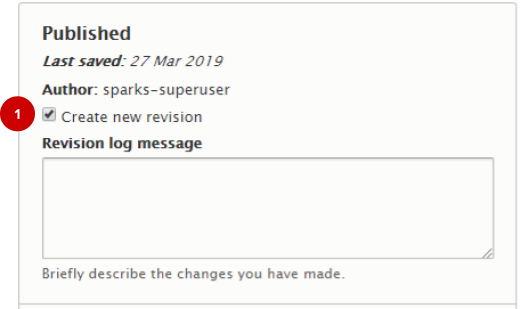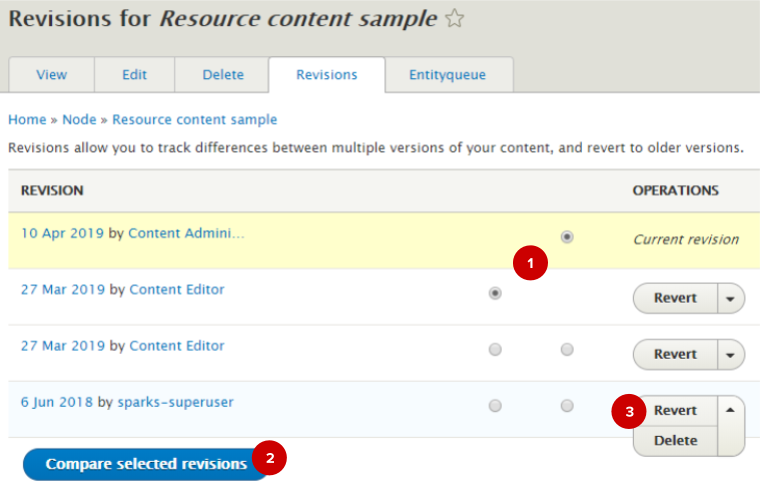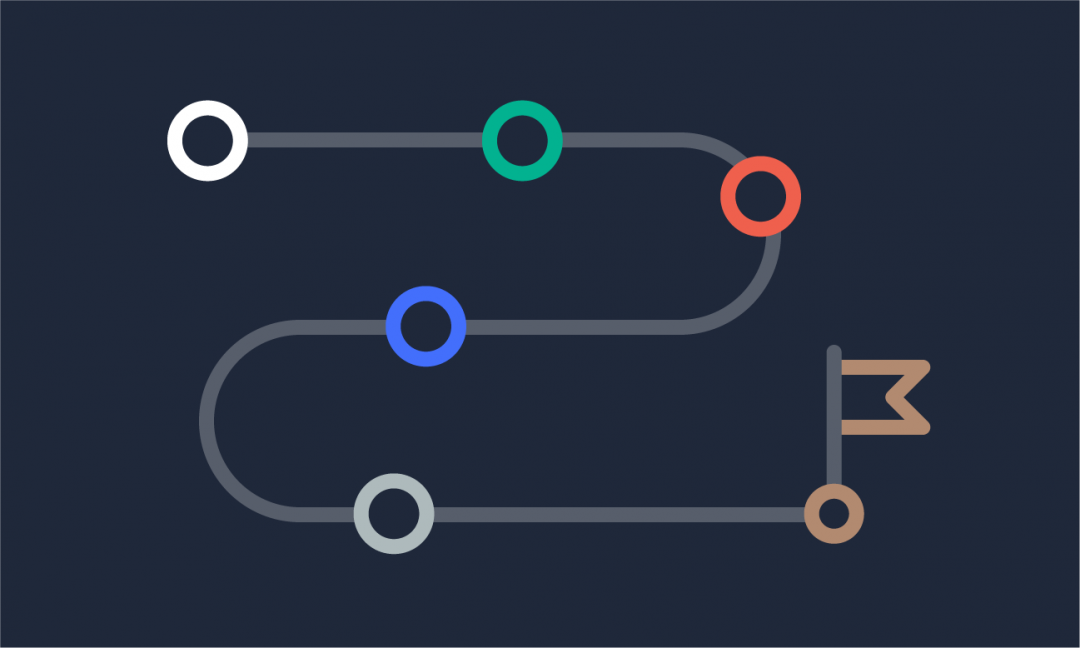We are updating our documentation library to be ready for the Sector 10! Find out more in our Sector 10 roadmap or head straight to our collection of Sector 10 - Changes and Updates.
Revisions are used to keep track of changes made to content - this allows you to go back in time and revert the node back to a previous version if needed.
Revision or no revision?
Revisions are a very useful tool - who doesn't want an undo when you need it? However, revisions can clog up your database quickly, and for larger sites this will create issues.
So should you create a revision every time you save a node? Yes! All content types in Sector are configured to create revisions by default. Should you keep all these revisions? No. Managing revisions is part of maintaining your site and curating your content.
In this guide
Creating a revision
All content types in Sector are configured to create revisions by default, so the 'Create new revision' box ( 1 ) in the sidebar of your node edit form will be checked in most cases.
Can't see the 'Create new revision' box?
It's likely that you haven't saved your node yet - you will only be able to see the box once the node has been saved once (this will create the first revision).
Reverting to a revision
Navigate to the revisions tab for the node by using the contextual links in the frontend, or by editing the node in the backend, and then selecting the 'Revisions' tab.
In the revisions tab, you can see all revisions for the node.
You can compare the differences between two revisions by selecting them using the selection buttons ( 1 ) and then clicking 'Compare selected revisions' ( 2 ).
Under 'Operations' you can revert ( 3 ) or delete a revision. Reverting to a revision means that the previous version of the node becomes the current revision. Take care if deleting revisions, as deleted revisions can’t be recovered.
Managing revisions
What to keep and what not to keep? This is our advice - aim for clear snapshots in time.
- Delete in-between edits - lots of small edits over a day
- Delete drafts - content edits prior to publication
- Keep versions that were online for a long time
- Add revision notes so that you know what has changed
If you are a govt.nz entity
- Check your audit requirements
- Check your responsibilities around the Public Record Act (PRA) and the Official Information Act (OIA)
Limitations of revisions
Not all changes can be saved in revisions. The node edit form contains content fields (revisioned) and fields that are related to your content but aren’t part of the node (not revisioned).
Changes to these non-revisioned fields are made immediately when a node is saved, and include changes to:
-
Menu label
-
Meta tags
-
URL path setting
-
URL redirect
-
Authoring information


